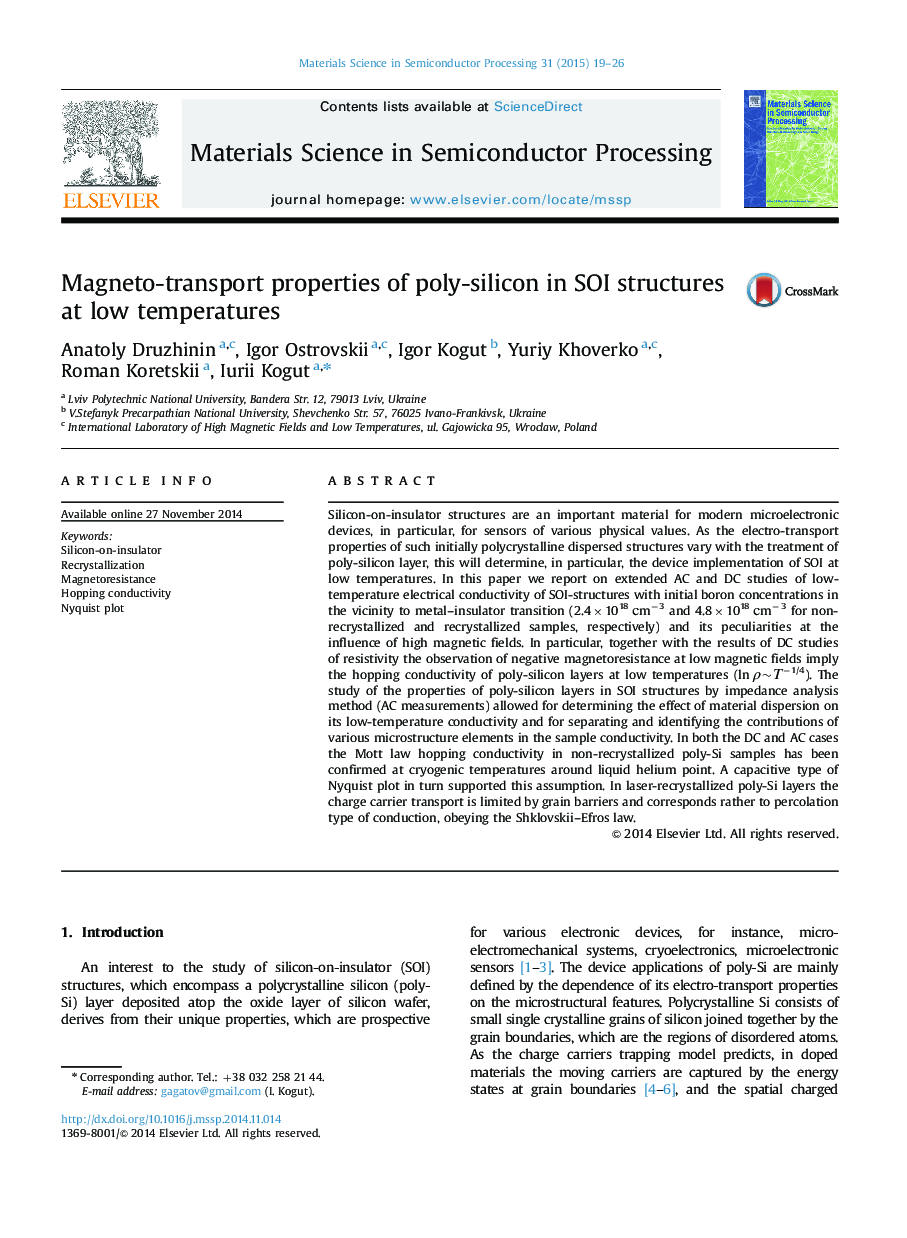| Article ID | Journal | Published Year | Pages | File Type |
|---|---|---|---|---|
| 728029 | Materials Science in Semiconductor Processing | 2015 | 8 Pages |
Silicon-on-insulator structures are an important material for modern microelectronic devices, in particular, for sensors of various physical values. As the electro-transport properties of such initially polycrystalline dispersed structures vary with the treatment of poly-silicon layer, this will determine, in particular, the device implementation of SOI at low temperatures. In this paper we report on extended AC and DC studies of low-temperature electrical conductivity of SOI-structures with initial boron concentrations in the vicinity to metal–insulator transition (2.4×1018 сm−3 and 4.8×1018 сm−3 for non-recrystallized and recrystallized samples, respectively) and its peculiarities at the influence of high magnetic fields. In particular, together with the results of DC studies of resistivity the observation of negative magnetoresistance at low magnetic fields imply the hopping conductivity of poly-silicon layers at low temperatures (ln ρ~Т−1/4). The study of the properties of poly-silicon layers in SOI structures by impedance analysis method (AC measurements) allowed for determining the effect of material dispersion on its low-temperature conductivity and for separating and identifying the contributions of various microstructure elements in the sample conductivity. In both the DC and AC cases the Mott law hopping conductivity in non-recrystallized poly-Si samples has been confirmed at cryogenic temperatures around liquid helium point. A capacitive type of Nyquist plot in turn supported this assumption. In laser-recrystallized poly-Si layers the charge carrier transport is limited by grain barriers and corresponds rather to percolation type of conduction, obeying the Shklovskii–Efros law.
